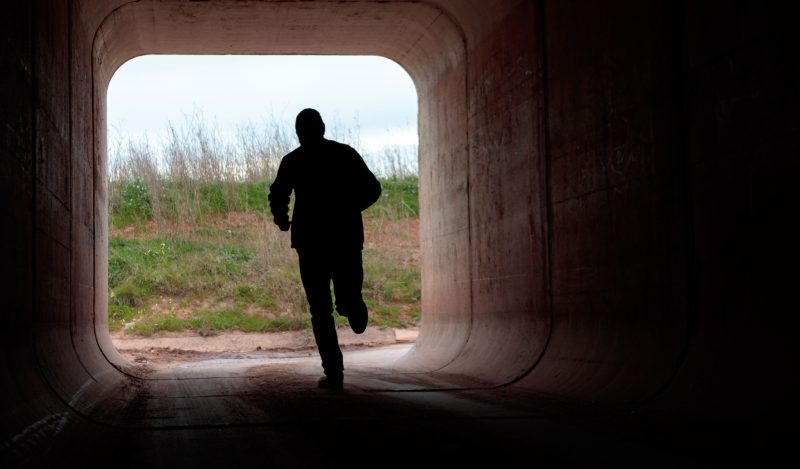It’s not been Anthony Fauci’s best week.
Forever intent on managing his image and public opinion on the pandemic response, he accepted a seemingly safe interview on CNN. The reporter was someone he trusted, Michael Smerconish, who tossed in what he believed to be a softball question.
He asked Fauci about the Cochrane study on masks by Tom Jefferson, and, in particular the author’s comments to Brownstone fellow Maryanne Demasi. Jefferson flat out said that masks don’t work to control viruses. Smerconish simply wanted Fauci’s response.
Fauci, who might have been expected to perform better, stumbled very badly. He said that while on a population level mask evidence is weak, the evidence is stronger on an individual level. That of course is a bit of a head-scratcher, especially since he cited none of the supposed studies.
Actually, it makes no sense at all. The whole point of the Jefferson paper was to examine the best-possible evidence. The results were exactly the “science” that Fauci has touted for years. The big difference is that the results completely contradict Fauci himself. Is this guy a pathological liar?
You can watch the snippet:
After the exchange, Smerconish reported that he texted Fauci an apology for the way the interview went, assuring him that it was not intended as a “gotcha” interview. He reported that Fauci texted him back but didn’t want to share the contents because he didn’t have permission. Interesting. I’m pretty sure that a reporter under normal circumstances would certainly share that information. But as we know, Fauci is in a league of his own.
In addition, some very interesting email correspondence came out, thanks to a FOIA request by US Right to Know. The communication to Fauci was courtesy of Fauci’s chief of staff Greg Folkers and on behalf of Fauci’s frequent co-author David Morens. The date was January 27, 2020, about the time that China’s experience with SARS-CoV-2 was making the news all over the US. (I wrote my first article against lockdowns for Covid the next day.)
“EcoHealth group (Peter Daszak et al), has for years been among the biggest players in coronavirus work, also in collaboration with Ralph Baric, Ian Lipkin and others,” wrote Folkers. In the past 5 years, and working with the Wuhan Institute of Virology, they had discovered hundreds of coronaviruses circulating in China. Further, the memo said, “clinical signs of bat SARS-CoVs in mice were not prevented with a vaccine candidate against SARS-CoV, and were not treatable with most monoclonal therapies being developed.”
Here is the full memo:

The timing here checks out against Jeremy Farrar’s own memoir:
“By the second week of January, I was beginning to realise the scale of what was happening. I was also getting the uncomfortable feeling that some of the information needed by scientists all around the world to detect and fight this new disease was not being disclosed as fast as it could be. I did not know it then, but a fraught few weeks lay ahead. In those weeks, I became exhausted and scared. I felt as if I was living a different person’s life. During that period, I would do things I had never done before: acquire a burner phone, hold clandestine meetings, keep difficult secrets. I would have surreal conversations with my wife, Christiane, who persuaded me we should let the people closest to us know what was going on. I phoned my brother and best friend to give them my temporary number. In hushed conversations, I sketched out the possibility of a looming global health crisis that had the potential to be read as bioterrorism. ‘If anything happens to me in the next few weeks,’ I told them nervously, ‘this is what you need to know.’”
Wow, these guys believed they would be off’d! That’s some crazy stuff there.
These weeks were the critical turning point. China had already locked down. Farrar reports that “the world had all the information it needed by 24 January: a potentially fatal novel respiratory disease that could spread between people without symptoms, with no vaccines or treatments, that had already ravaged a huge, highly connected Chinese city.”
Then the possibility of a lab leak became very obvious in these days. “In the last week of January 2020,” he writes, “I saw email chatter from scientists in the US suggesting the virus looked almost engineered to infect human cells. These were credible scientists proposing an incredible, and terrifying, possibility of either an accidental leak from a laboratory or a deliberate release.”
This fits exactly with the above memo to Fauci. It was at this point that the cool-and-collected Fauci organized the authors of what became the “Proximal Origin” paper that denied it was a lab leak, the first draft of which was circulated on February 4. Among the authors was a virologist who had worked with EcoHealth.
You can look through the entire timeline and see that this all checks out. It seems ever clearer what was going on here. Fauci and his cohorts were alerted to NIH funding of the Wuhan lab. They became convinced of the very strong likelihood that this was a lab leak, accidental or deliberate. This began to make some sense of other reports from many months earlier of sick soldiers returning from the Military World Games. They panicked and they worked on a cover-up.
Why did they panic? Was it for fear of the public health consequences of a rapidly spreading virus? More likely, they panicked that they would rightly be blamed for it because the lab was funded through a third party by US taxpayers. They must also have known that they were doing gain-of-function research: the idea that labs create viruses and then also manufacture the antidote in the form of a vaccine. But according to the report on Fauci’s desk, no vaccine works for this one or others in this class of virus.
Fauci defaulted to the only action he could think of at the time: use lockdowns to minimize the spread. His staff had already taken a junket to Wuhan and returned with a report dated February 24, 2020 that said that lockdowns worked to suppress viral spread.
Lacking any better ideas, Fauci decided to push lockdowns as a way of minimizing the damage and keeping his reputation out of harm’s way by 1) denying the lab leak with a seemingly credible paper, and 2) causing a hugely distracting amount of chaos with a lockdown that they convinced Donald Trump himself to back.
This would of course wreck the Trump presidency, which was a bonus from the point of view of the military intelligence that was already working to implement protocols from their recently concluded “germ games.”
Next in line came the necessity to involve the New York Times, which on February 28 ran an article calling for the US to “go medieval” on the virus in addition to an article by Peter Dazsak himself on the op-ed page!
Four days later, Fauci told Michael Gerson of the Washington Post on March 2, 2020, that no vaccine would be needed to get over the pandemic. “Social distancing is not really geared to wait for a vaccine,” wrote Fauci. “The epidemic will gradually decline and stop on its own without a vaccine.”
Why would he say this? Again, Fauci had been told that no vaccine in China seemed to work. Plus, he is not a stupid man – coronaviruses mutate too quickly – and had years of attempts to vaccinate against AIDS without success. So his thinking was that using force to stop the spread was the only real option for a man who was seeking to “cover his ass,” as the expression goes.
The big problem with the plan, of course, was that there was no exit strategy. As soon as you open up, the virus is going to spread anyway. This was why Fauci welcomed all attempts at creating a vaccine anyway. At least the vaccine would provide an excuse to end the lockdowns.
But just in case it did not, he worked with his co-author David Morens on a big think piece that came out in Cell in August 2020. This was the paper that said lockdowns should really be permanent.
“Living in greater harmony with nature,” they wrote, “will require changes in human behavior as well as other radical changes that may take decades to achieve: rebuilding the infrastructures of human existence, from cities to homes to workplaces, to water and sewer systems, to recreational and gatherings venues.”
Despite Fauci’s wishes, the most extreme aspects of lockdowns gradually faded away in time, most anointed experts can pretend as if the vaccine ended the worst aspects of the pandemic (that’s why the mandates became necessary, if only to maximize uptake and confound the science), and Fauci keeps going on national television, despite his age and wealth, to dial back his responsibility for any aspect of it, including the lockdowns he is on record backing from February 26, 2020, onward.
In any case, this is a summary of current knowledge. There are of course many other layers to this onion, including the early involvement of the pharmaceutical companies and the extensive intervention by the Department of Defense. Sadly, much of the necessary information to sort through that thicket is wholly classified.
Thus ends Fauci’s not-so-good week. We’ll get to the bottom of this eventually.
Published under a Creative Commons Attribution 4.0 International License
For reprints, please set the canonical link back to the original Brownstone Institute Article and Author.









